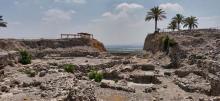
This blog post is part of a series jotting through my trip to Israel in June 2019. For contents page for the posts see the Introductory Post. If I've reported something incorrectly, please let me know via post comments (below) or my contact page. All photographs are Copyright © James Oakley, June 2019, unless indicated otherwise.
Day 10 was leave-Israel day.
Time to say goodbye to the Sea of Galilee
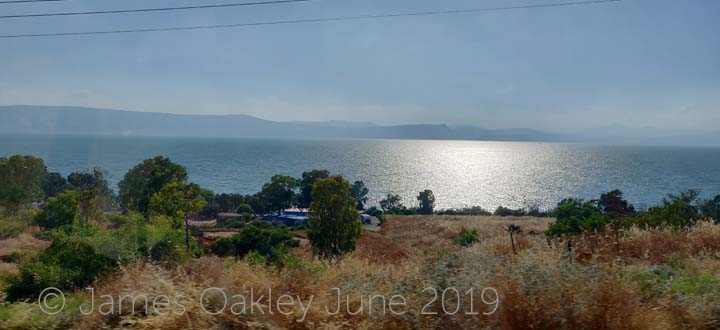
And, indeed, to the whole country. A sad day, but time for a few ports of call on the way out.
On the way from Galilee through the Plain of Jezreel we passed Mount Tabor, a sizeable hill that dominates the flat land all around, and has therefore been strategic throughout history. Along with Hermon, it's one of the geographical markers you meet in the Bible to symbolise the northern edge of the kingdom.
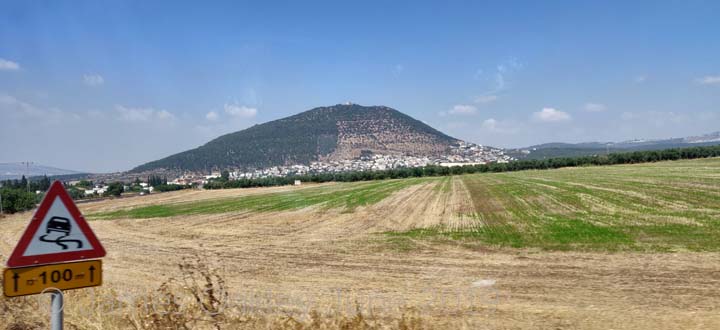
And so we came to Megiddo, also an extremely significant site. It is easy to defend, and guards a pass through the hills that takes you from the Valley of Jezreel to the coastal plains.
Like many ancient cities, it's now a "tel" - a layer of cities built on one another. So you can look down from the most recent ruins to the Canaanite city ruins far below.
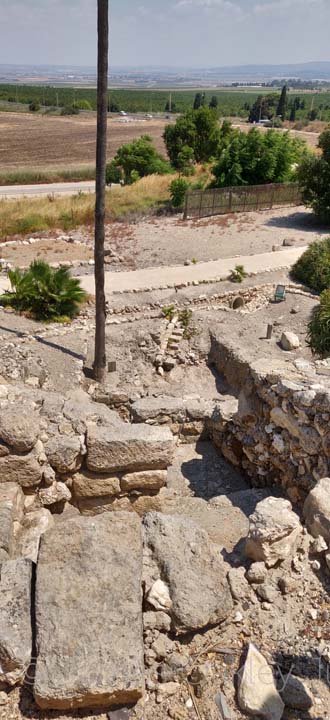
Megiddo originally belonged to the land allocated to the tribe of Manasseh (Joshua 12:21), but they were not able to drive out the Canaanites who lived there, with their advanced chariot technology (Joshua 17:11-12)
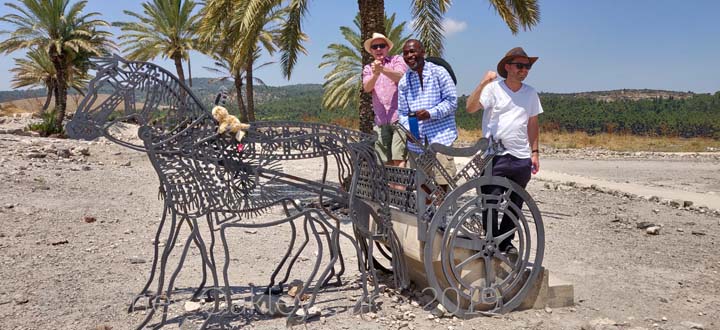
However Solomon did succeed, and made it one of his three great forts to guard the reaches of his kingdom, along with Hazor and Gezer, and his own capital of Jerusalem (1 Kings 9:15).
God told his people that, when they built altars, they were not to ascend them with steps. Here we see an altar built with a stepped approach, which illustrates this command:
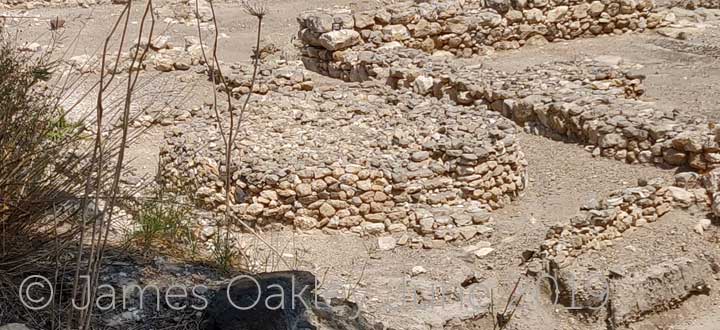
Jeroboam II built a huge grain silo there, with steps to allow people to walk down to the level of the stored grain, with a capacity of 450 cubic metres.
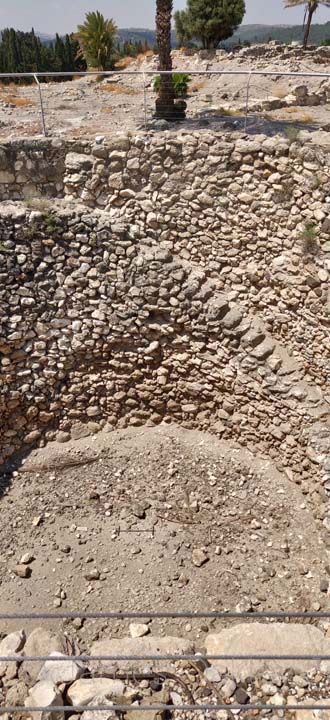
The stables have been found, where the horses would have beek kept and fed and watered.
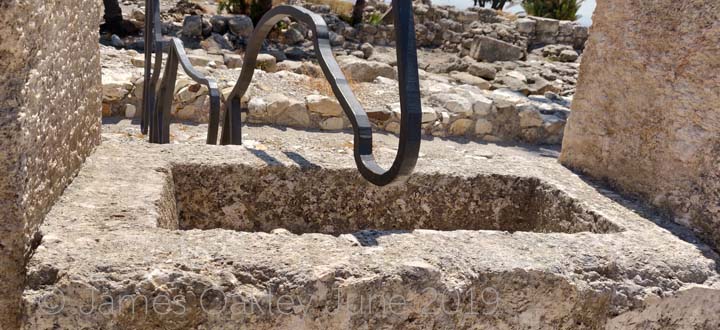
And, of course, no visit to an ancient hillfort would be complete without another cistern to descend and explore
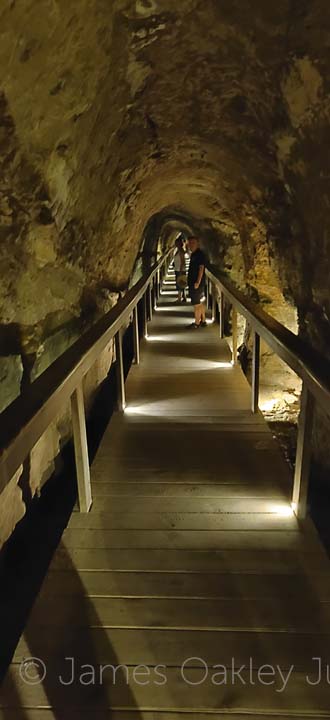
You go down first, and then along to reach the water source that would be below yet outside the ancient city walls. This one still has water in - you can still descend to the level required to hit the water table (a little hard to see the water in the picture, but anyway):
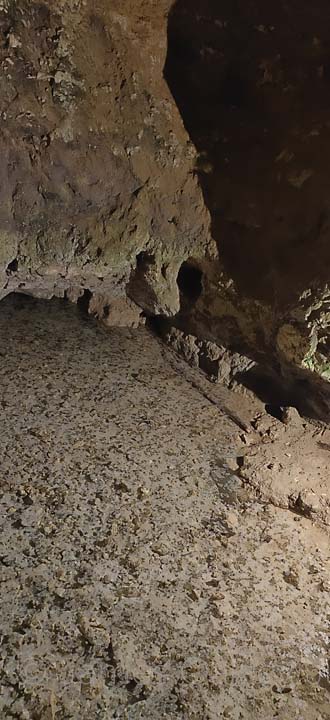
Two more things to say about Megiddo. It is at the head of the Valley of Jezreel, near the ancient city of Jezreel. That means lots of battles in the Old Testament occurred here or nearby (such as 2 Chronicles 35:21-24). But it also means that it's near here that Naboth would have had his vineyard (1 Kings 21). So here is a view from Megiddo out over the plain of Jezreel, looking down on (yes) a vineyard. Picture Ahab coveting this, and arranging the murder of the present owner, maybe from this very spot.
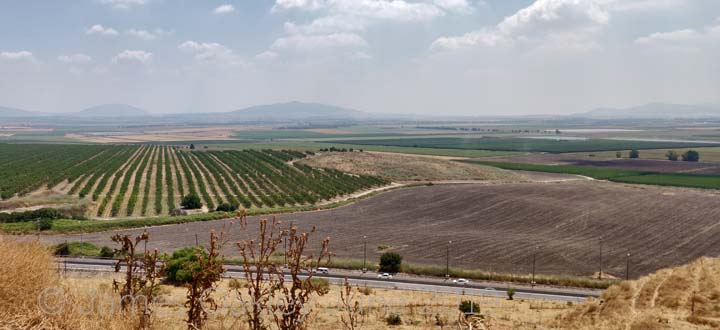
Next, Revelation 16:16 depicts part of the day of judgement in battle terms, and depicts it taking place at "the place that in Hebrew is called Armageddon". That one reference has triggered all kinds of allusions in popular culture to Armageddon being the end of the world. Probably, "Armageddon" is a conflation of "Har Megiddo", "Har" being the Hebrew for a hill or mountain.
Don't worry, if you're hungry while waiting for the end of the world, there is fast food at Armageddon:
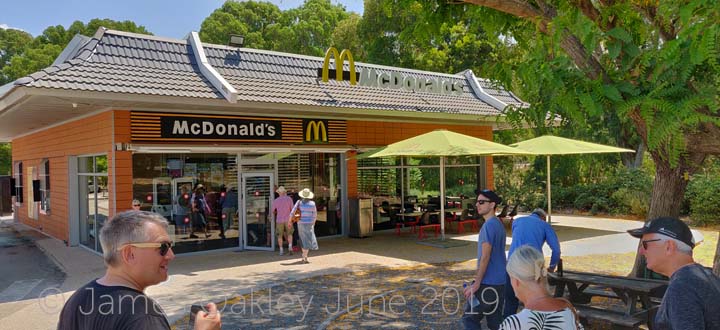
Actually, you won't miss the end of the world. Wherever you are, even in your own grave, you will at once become aware that Jesus requires to meet you now personally. And you'll get no warning to have time for a meal either. But God's grace in the death and resurrection of Jesus gives you all you need so you're fully prepared and have nothing to fear - provided you receive him now.
And so back to the airport, and time to leave Israel and head back home, with a head and heart full of memories, and a whole lot of things making a lot more sense.
Recent comments